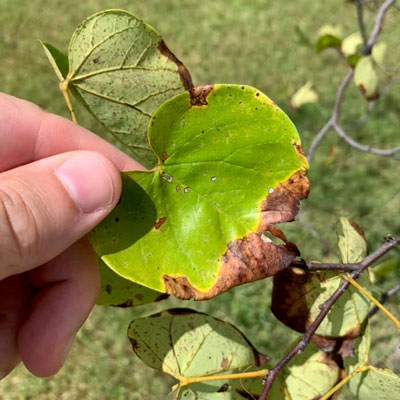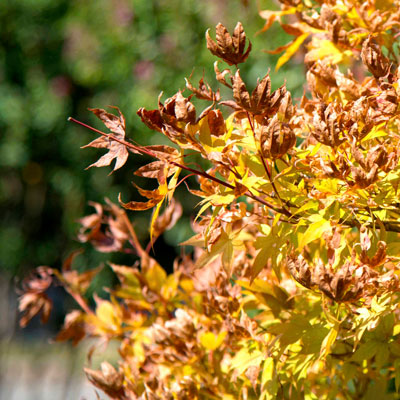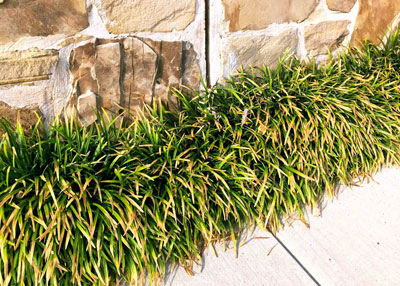Question of the Week: August 15, 2019
“Why are my plant’s leaves turning brown around the edges like this?”
People are always amazed when I come back quickly with an answer to this question by saying, “That’s moisture stress.” What they don’t realize is that I haven’t really told them much of anything. You see, “moisture stress” encompasses a wide range of possibilities. Here are the common ones.

Reasons you see moisture stress in plants…
• Root loss due to transplanting.
• Trunk damage due to trimmers.
• Decay from a branch that wasn’t pruned properly.
• Rodent feeding on trunks, especially rats and mice.
• Hot, drying winds. This can include highway winds as you are transporting new plants home from the nursery.
• Excess mineral salts from high-sodium water or fertilizers.

• Too much sunlight for a shade-loving species.
• Oh, and dry soil. Letting plants go too long between waterings.
All of which is to say…
Generally, when someone shows me leaves that have browned edges or tips, I have to tell them that the real source of their troubles isn’t in the leaves. It’s somewhere farther down – in the branches, the trunk or the roots, and that they need to do some more searching.
I compare this to what happens when our bodies suffer from poor circulation due to frostbite or diabetes. Doctors warn us that the points farthest from our hearts will be where the problems will show up first – the tips of our nose, fingers and toes.

The edges and tips of leaves and the far sides of fruit correspond to those parts of our bodies. They’re the first areas to get brown and the last to get water once it comes into the plants, so that’s why that’s where the problem appears.
And, just for the record, that’s the same thing that happens with blossom end rot of tomatoes when their plants outgrow the plants’ ability to get water out to the ends of the fruit. Those tissues dry and turn brown leaving a sunken inedible side to the fruit.
